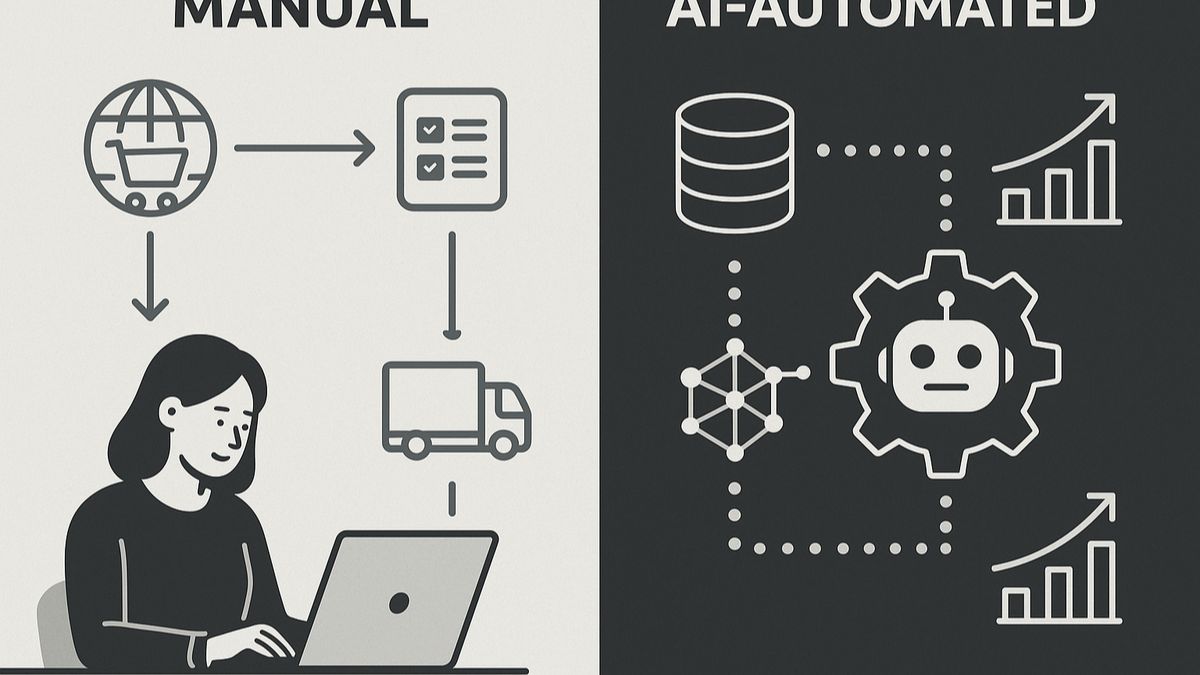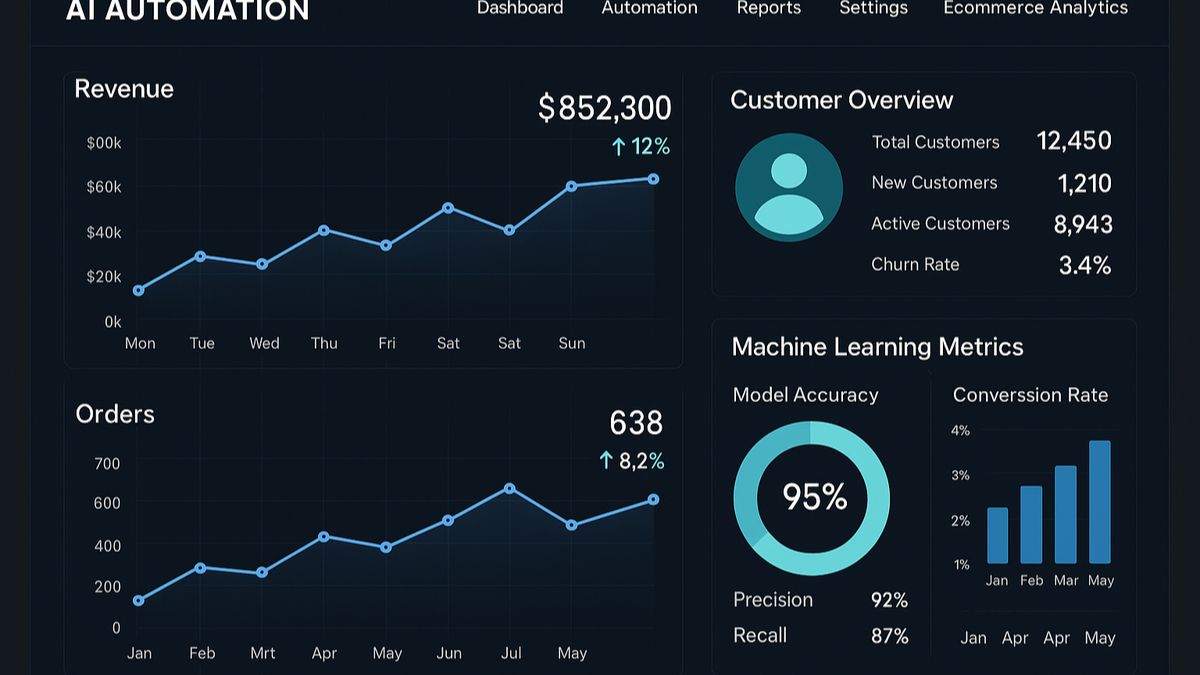In the rapidly evolving digital landscape, AI automation has become the cornerstone of successful ecommerce operations. Ulta Beauty’s remarkable transformation demonstrates how strategic AI implementation can drive unprecedented business growth, achieving a 95% customer retention rate and revolutionizing the beauty retail experience.
As specialists in AI automation and business solutions, we analyze Ulta Beauty’s comprehensive AI strategy to provide actionable insights for businesses seeking digital transformation.
AI automation The Business Challenge: Scaling Personalization
Before implementing AI automation, Ulta Beauty faced typical ecommerce challenges:
- Manual Customer Segmentation: Time-intensive processes limiting personalization scale
- Inventory Management Complexity: Difficulty predicting demand across 25,000+ products
- Customer Service Bottlenecks: High-volume inquiries overwhelming support teams
- Marketing Campaign Inefficiency: Generic campaigns yielding low conversion rates
AI Automation Implementation: A Technical Deep Dive

1. Customer Data Platform Integration
Ulta Beauty deployed a sophisticated AI automation system that processes:
- Real-time Behavioral Data: Website interactions, purchase history, browsing patterns
- Omnichannel Integration: In-store and online customer journey mapping
- Predictive Analytics: Machine learning models forecasting customer preferences
- Dynamic Segmentation: Automated customer grouping based on 200+ data points
Technical Stack Components:
- Cloud-based data warehousing for scalable processing
- Machine learning pipelines for real-time decision making
- API integrations connecting CRM, inventory, and marketing systems
- Advanced analytics dashboards for business intelligence
2. Personalization Engine Architecture
The AI automation platform delivers personalized experiences through:
Product Recommendation System:
- Collaborative filtering algorithms analyzing customer similarities
- Content-based filtering matching product attributes to preferences
- Hybrid models combining multiple recommendation approaches
- A/B testing frameworks optimizing recommendation accuracy
Dynamic Content Generation:
- Automated email personalization for 30+ million customers
- Website content adaptation based on user behavior
- Social media content optimization using engagement data
- Push notification timing and content automation
3. Inventory Intelligence and Demand Forecasting
AI automation transformed Ulta Beauty’s supply chain management:
Predictive Inventory Management:
- Machine learning models analyzing seasonal trends and product lifecycles
- Automated reorder systems preventing stockouts and overstock situations
- Regional demand prediction accounting for local preferences
- New product launch performance forecasting
Supply Chain Optimization:
- Warehouse automation reducing fulfillment time by 40%
- Route optimization for faster delivery and reduced costs
- Vendor performance analysis and automated negotiations
- Quality control systems using computer vision technology
Business Impact: Quantifiable Results
Revenue Growth Metrics
- 95% Customer Retention Rate: Industry-leading loyalty through personalization
- 40% Increase in Average Order Value: AI-driven product recommendations
- 60% Improvement in Conversion Rate: Personalized shopping experiences
- 35% Reduction in Customer Acquisition Cost: Improved targeting efficiency
Operational Efficiency Gains
- 75% Automation of Customer Service Inquiries: AI chatbots handling routine questions
- 50% Reduction in Inventory Waste: Accurate demand forecasting
- 80% Faster Marketing Campaign Deployment: Automated content generation
- 90% Improvement in Email Engagement: Personalized communication strategies
AI Automation Technologies: Technical Implementation
Machine Learning Infrastructure
Data Processing Pipeline:
Raw Data → Data Cleaning → Feature Engineering → Model Training → Deployment → Monitoring
Key Technologies Utilized:
- Natural Language Processing: Customer review analysis and sentiment monitoring
- Computer Vision: Virtual try-on experiences and product image recognition
- Deep Learning: Complex pattern recognition in customer behavior
- Reinforcement Learning: Optimizing recommendation algorithms through user feedback
Integration Architecture
System Components:
- ERP Integration: Real-time inventory and financial data synchronization
- CRM Automation: Customer journey tracking and lifecycle management
- Marketing Automation: Multi-channel campaign orchestration
- Analytics Platform: Business intelligence and performance monitoring
API-First Approach:
- RESTful APIs enabling seamless system communication
- Microservices architecture supporting scalable deployments
- Real-time data streaming for immediate response capabilities
- Cloud-native infrastructure ensuring high availability
Implementation Roadmap: Lessons for Business Leaders
Phase 1: Foundation Building (Months 1-3)
- Data Infrastructure Setup: Establishing robust data collection and storage systems
- Team Training: Upskilling staff in AI tools and processes
- Pilot Program Launch: Testing AI automation in limited scope
- Performance Baseline Establishment: Measuring current metrics for comparison
Phase 2: Core AI Deployment (Months 4-8)
- Personalization Engine Implementation: Rolling out recommendation systems
- Customer Service Automation: Deploying AI chatbots and support tools
- Marketing Automation Integration: Connecting AI with campaign management
- Inventory Intelligence Activation: Implementing predictive analytics
Phase 3: Optimization and Scale (Months 9-12)
- Advanced Analytics Implementation: Sophisticated business intelligence tools
- Cross-channel Integration: Unifying online and offline experiences
- Performance Optimization: Continuous model improvement and refinement
- ROI Measurement and Reporting: Demonstrating business value
Industry Applications: Beyond Beauty Retail
AI automation strategies from Ulta Beauty’s success can be adapted across industries:
Fashion and Apparel
- Size recommendation algorithms reducing returns by 30%
- Trend prediction models informing inventory decisions
- Virtual styling assistants enhancing customer experience
- Social commerce integration driving engagement
Electronics and Technology
- Compatibility checking systems reducing support inquiries
- Technical specification matching for complex products
- Warranty and service optimization through predictive maintenance
- Product lifecycle management and discontinuation planning
Healthcare and Pharmaceuticals
- Patient engagement platforms improving treatment adherence
- Inventory management for critical medical supplies
- Regulatory compliance automation reducing administrative burden
- Personalized health recommendations based on patient data
Technical Considerations for Implementation
Data Privacy and Security
- GDPR Compliance: Implementing privacy-by-design principles
- Data Encryption: Protecting customer information at rest and in transit
- Access Controls: Role-based permissions ensuring data security
- Audit Trails: Comprehensive logging for compliance and monitoring
Scalability Planning
- Cloud Infrastructure: Leveraging auto-scaling capabilities
- Performance Monitoring: Real-time system health tracking
- Load Testing: Ensuring system reliability under peak conditions
- Disaster Recovery: Backup and restoration procedures
MahadIT’s AI Automation Solutions
Based on Ulta Beauty’s success blueprint, our AI automation services include:
Custom AI Development
- Machine learning model development and training
- Natural language processing solutions
- Computer vision applications
- Predictive analytics platforms
Business Process Automation
- ERP and CRM system integration
- Marketing automation implementation
- Customer service chatbot development
- Inventory management optimization
Data Intelligence Solutions
- Business intelligence dashboard creation
- Real-time analytics implementation
- Data pipeline development
- Performance monitoring systems
ROI Calculation Framework
For businesses considering AI automation implementation:
Cost-Benefit Analysis
Implementation Costs:
- Technology infrastructure: math
50,000-200,000 - Custom development: math
100,000-500,000 - Staff training and change management: math
25,000-100,000 - Ongoing maintenance: math
20,000-80,000 annually
Expected Returns:
- Revenue increase: 15-40% within first year
- Operational cost reduction: 20-35%
- Customer acquisition cost decrease: 25-50%
- Employee productivity improvement: 30-60%
Future Trends: Next-Generation AI Automation
Emerging Technologies
- Generative AI: Creating personalized content at scale
- Edge Computing: Real-time processing for instant responses
- Quantum Computing: Solving complex optimization problems
- Augmented Analytics: Self-service business intelligence tools
Industry Evolution
- Ethical AI Frameworks: Ensuring responsible AI deployment
- Explainable AI: Transparent decision-making processes
- Federated Learning: Privacy-preserving model training
- AI Governance: Organizational structures for AI oversight
Conclusion
Ulta Beauty’s AI automation success demonstrates the transformative power of strategic technology implementation. Their 95% customer retention rate and operational efficiency gains provide a compelling blueprint for businesses seeking digital transformation.
The key to successful AI automation lies in understanding your business objectives, implementing robust technical infrastructure, and maintaining a customer-centric approach throughout the transformation journey.
As AI technology continues advancing, businesses that embrace automation today will establish competitive advantages that compound over time, creating sustainable growth and enhanced customer experiences.
For organizations ready to embark on their AI automation journey, partnering with experienced technology providers ensures successful implementation while minimizing risks and maximizing returns on investment.
